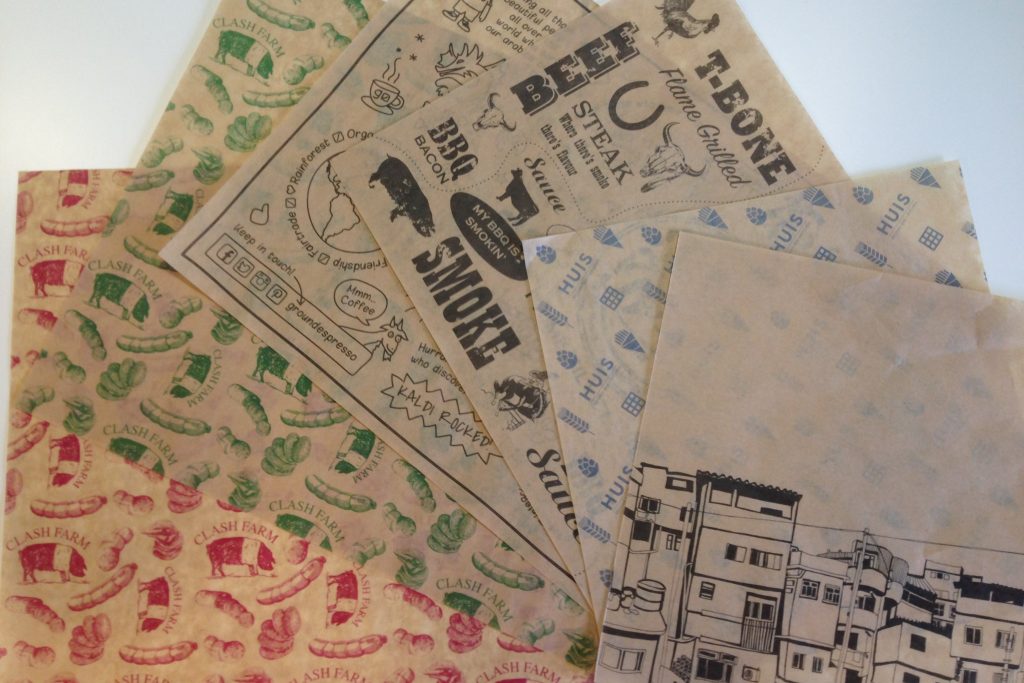In today’s digital world, where business communication is predominantly online, the significance of print material cannot be overstated. From business cards to brochures, to packaging, every physical manifestation of your brand is a representation of your business. One key aspect that often confuses people in the print industry is the term “GSM,” which stands for grams per square meter, and is commonly used to determine the weight of paper, fabric, and other materials. In this article, we will delve into the world of GSM, with a focus on paper weight, fabric weight, and custom printing.
Understanding GSM for Paper
Paper weight is a critical factor in printing, as it directly affects the appearance and feel of the printed material. GSM is a measure of the weight and thickness of paper, and is typically used to describe the quality and durability of the paper. The higher the GSM, the thicker and heavier the paper.
GSM can vary significantly depending on the type of paper. For example, standard copy paper usually has a GSM of around 80-100, while premium quality paper may have a GSM of 120-150. On the other hand, heavy-duty paper used for packaging and business cards can have a GSM of up to 300 or more.
It’s important to note that GSM is not a measure of paper quality or texture. It’s simply a measure of weight. Different types of paper can have the same GSM but very different textures and finishes. For example, a glossy paper may have the same GSM as a matte paper, but they will feel and look very different.
GSM for Fabric
GSM is also commonly used in the textile industry to measure the weight of fabrics. In the context of fabric, GSM refers to the weight of one square meter of fabric, measured in grams. It is often used to determine the quality and thickness of fabrics.
Fabrics with a lower GSM are generally lighter and more breathable, while fabrics with a higher GSM are heavier and warmer. For example, a lightweight cotton fabric may have a GSM of 100-150, while a heavy denim fabric may have a GSM of 300-400.
GSM can vary depending on the type of fabric and the weave. For example, a jersey knit fabric may have a lower GSM than a woven cotton fabric, even if they are made from the same material.
GSM Custom Printing Paper
In the context of custom printing, GSM is an important consideration when choosing the right paper for your print material. The weight and thickness of the paper can affect the appearance and durability of the final product.
For example, a business card printed on heavier paper with a higher GSM may feel more premium and professional than one printed on lighter paper. Similarly, a brochure printed on heavier paper may feel more substantial and high-quality.

It’s important to consider the GSM of the paper when designing your print material. A higher GSM paper may require different design considerations, such as adjusting the layout to accommodate the thickness of the paper or using a stronger adhesive for binding.
Custom Printing – Why it Matters
Custom printing has been around for centuries, yet it remains as relevant and impactful as ever. In today’s digital age, where competition is fierce and first impressions matter more than ever, the ability to stand out from the crowd is crucial. That’s where custom printing comes in.
Custom printing allows you to create unique, eye-catching designs that reflect your brand’s personality and values. Whether it’s a business card, brochure, or packaging, custom printing gives you the creative freedom to design something that truly represents your brand and leaves a lasting impression on your customers.
The Importance of Butcher Paper in Custom Printing
When it comes to custom printing, the type of paper you use can make a significant impact on the final product. Butcher paper, also known as kraft paper, is a popular choice for custom printing due to its durability and versatility. It’s commonly used for packaging, wrapping, and creating custom labels.
What Makes Butcher Paper Ideal for Custom Printing
Butcher paper is made from natural kraft paper, which is unbleached and unwaxed. This makes it a great choice for custom printing because it has a clean and natural look that is perfect for branding. It’s also strong and durable, which means it can withstand the rigors of shipping and handling.

Butcher paper is also highly customizable. It can be easily printed with your logo, branding, or other custom designs. This makes it a great choice for creating custom packaging, wrapping, or labels that reflect your brand’s personality and values.
Choosing the Right Butcher Paper for Your Project
When choosing the right butcher paper for your project, there are a few factors to consider. First, consider the weight and thickness of the paper. Heavier and thicker papers are more durable and can withstand more wear and tear. However, they can also be more expensive.
Next, consider the finish of the paper. Butcher paper comes in a variety of finishes, including matte, glossy, and satin. Matte finishes are ideal for a natural and rustic look, while glossy finishes are perfect for a more polished and professional appearance.
Finally, consider the size of the paper. Butcher paper comes in a variety of sizes, including rolls and sheets. Rolls are ideal for large-scale projects, such as packaging and wrapping, while sheets are better for smaller projects, such as labels and tags.
Final Words
In summary, GSM is an important factor to consider in both paper and fabric printing. It’s a measure of weight, and it can affect the appearance, feel, and durability of the final product. In custom printing, it’s important to choose the right GSM paper for your print material to achieve the desired look and feel.


